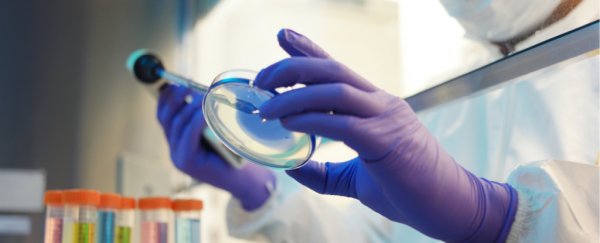In an industry where getting one drug developed from lab to clinic can cost hundreds of millions of dollars and decades of time, it helps when scientists can be thrifty and make use of substances that already exist.
A global team of researchers has now done just that, by searching through one of the world's largest collections of already developed drugs to discover 21 potential treatments for COVID-19.
We will need considerably more research to determine if any of these drugs can be used to help COVID-19 patients, but it's an excellent first step, bypassing some of the barriers for producing completely new drugs.
"The development of a vaccine is likely to require at least 12-18 months, and the typical timeline for approval of a novel antiviral therapeutic can exceed 10 years," the team writes in their new paper.
"Thus, repurposing of known drugs could significantly accelerate the deployment of novel therapies for COVID-19."
The researchers took the ReFRAME Drug Repurposing Library - 11,987 compounds which have either received FDA approval or made it to clinical-trials – and began testing them against SARS-CoV-2 in a line of cells called Vero, cultured from the kidney of an African green monkey (Chlorocebus sp.).
"We realised early in the COVID-19 pandemic that ReFRAME would be an invaluable resource for screening for drugs to repurpose against the novel coronavirus," says medical chemist and study co-author Arnab Chatterjee from Calibr, the drug discovery division of Scripps Research that created ReFRAME.
As was expected, the vast majority of the tests didn't result in much, but the team did find 100 compounds that inhibited viral replication of SARS-CoV-2 in Vero cells.
The team then demonstrated that 21 of those 100 compounds had a dose-response relationship – meaning the dose required to be effective wasn't also likely to cause harm to humans. One of these was remdesivir, so that leaves 20 yet to be tested for COVID-19 treatment.
Of those 21 drugs, 13 were found to be effective at concentrations that could be safely used in COVID-19 patients and had previously entered clinical trials.
"This study significantly expands the possible therapeutic options for COVID-19 patients, especially since many of the molecules already have clinical safety data in humans," said virologist Sumit Chanda from Sanford Burnham Prebys Medical Discovery Institute in California.
"This report provides the scientific community with a larger arsenal of potential weapons that may help bring the ongoing global pandemic to heel."
The 21 drugs are currently being tested further using small animal models or mini lungs that can mimic human tissue. However, the team has already found three that worked in human stem cell-derived lung tissue, and one showed antiviral effects in a lab-based lung culture system.
This is all exciting stuff, but as we've seen in many examples so far, caution is needed before rushing into the administration of new drugs, even during a pandemic - not all promising compounds will actually work against COVID-19, even if those drugs have been approved for other ailments in the past. The more treatments we have however, the better.
"While some of these drugs are currently in clinical trials for COVID-19, we believe it's important to pursue additional drug candidates so we have multiple therapeutic options," says Chanda.
The research has been published in Nature.
